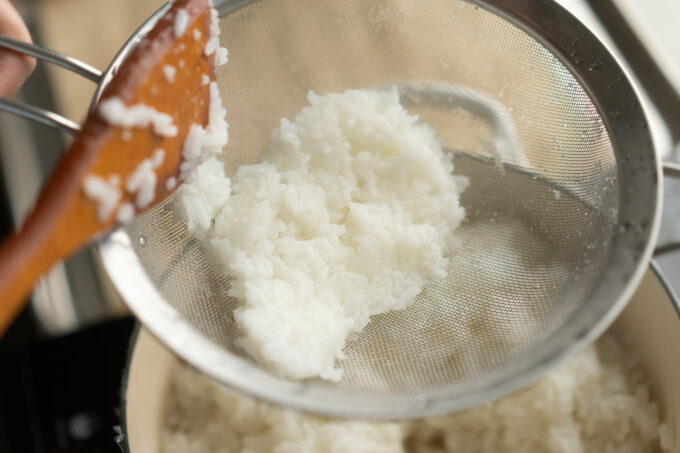
We all make mistakes when cooking, sometimes because we’re in a new kitchen with new equipment or rice. Whatever the reason, there’s hope to save your mushy or undercooked rice. We’ll cover how to fix overcooked, mushy rice and undercooked hard rice and give you tips on how to repurpose rice fails.
Why is my rice mushy or wet?
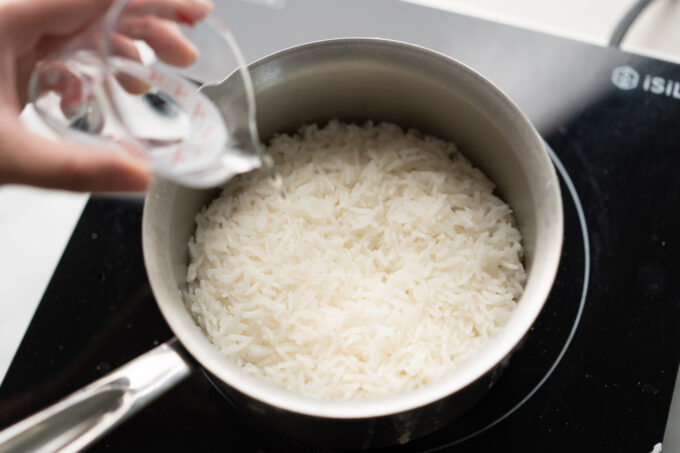
Mushy or soggy rice is usually caused by two things: the rice is overcooked, and too much liquid is absorbed into the rice. When the rice overcooks and absorbs excess water, the grains can split open, increasing the starchy and sticky texture. From my experience, there’s a relatively small threshold of how mushy rice can be before you can throw in the towel and restart the cooking process.
Method 1: Fix mushy rice in the fridge (if only slightly mushy)
Not all mushy, sticky rice can be saved because it’s hard to extract or dry out the water inside the grains. And while it’s possible to fix mushy rice, it also depends on how much water is absorbed. These methods will teach you what to do if your rice is too wet and mushy:
1. Spread the rice on a plate or parchment paper-lined sheet pan.
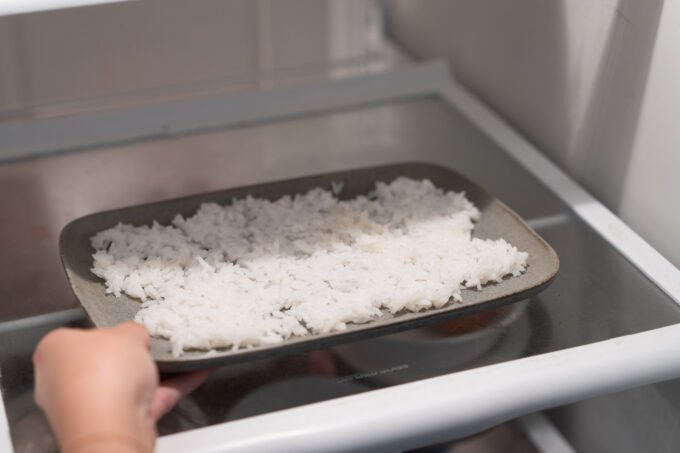
2. Place this in the fridge for 20 minutes or until the rice is dried out enough so it’s not mushy anymore.
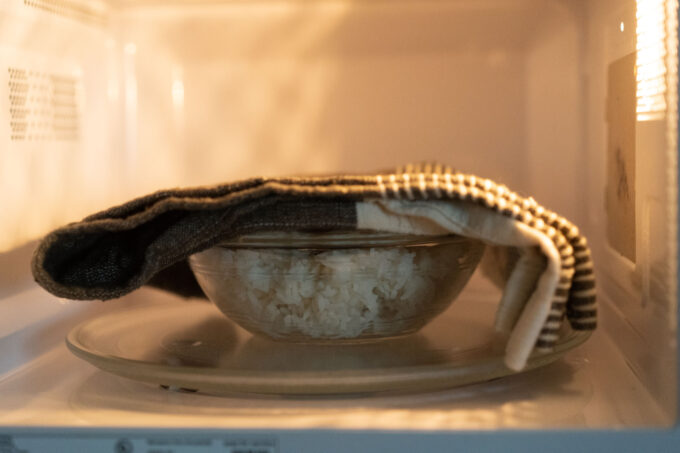
3. Now that it’s fully dried, just heat the rice up enough to eat! Microwave covered with a paper towel or kitchen towel in one-minute increments on level 10 (or the highest power) until it’s warmed up to your liking.
Method 2: Fix mushy rice in the oven (if super wet and mushy)
If your rice is super wet and mushy we’ll turn to a different method that lets more of the water dry out. You can attempt to fix a larger volume of rice this way without warming up the contents of your fridge.
1. Preheat the oven to 325 °F.
2. Line a baking sheet with parchment paper.
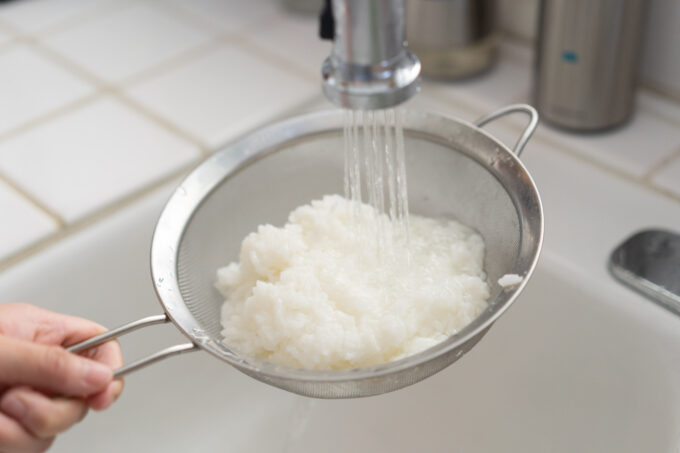
3. Add the rice into a strainer and rinse under cold water.

4. Evenly spread the rice on the parchment paper in one thin layer, not thicker than ⅛ inch thickness.
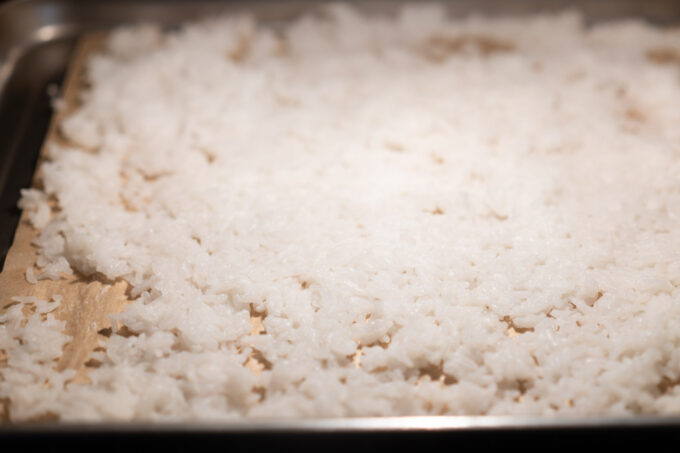
5. Bake the rice in increments of five minutes until it’s dried out enough so it’s not mushy. Continue to cook if it’s still too mushy. This typically took 5-10 minutes of cooking. Rice should be plump and not disintegrate when you touch it.
Method 3: Avoid mushy rice by cooking it perfectly
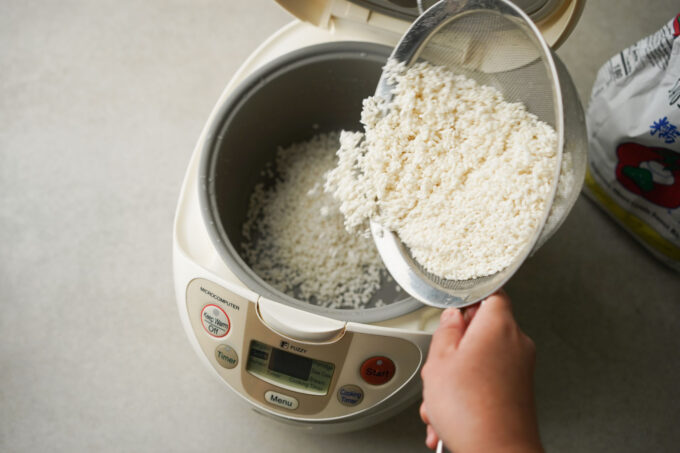
Not to sound cheeky, but the best way to avoid overcooked or undercooked rice is to cook it perfectly to begin with. I say this because the effort it takes to remake or cook rice perfectly the first time is not that hard compared to the effort of fixing mushy rice.
I realize this will only be helpful for your future rice cooking sessions, but use my rice guides and recipes on how to cook rice in a rice cooker, Instant Pot, on the stove, or even a microwave to achieve rice perfection. If you’re using a rice cooker or Instant Pot, it’s simply a matter of accurate measurements and rice-ratio to water. It’s dead simple once you know what to do.
How to repurpose mushy rice
You don’t need to waste the mushy rice either, just repurpose it and make something else. I like repurposing mushy rice into a dishes like:
- cháo gà (Vietnamese chicken porridge)
- rice pudding
If you want to dry the rice overnight on a plate in the fridge instead, you can make:
The rice should be able to get dry enough overnight in the fridge if you leave it uncovered.
Why is the rice I cooked hard?
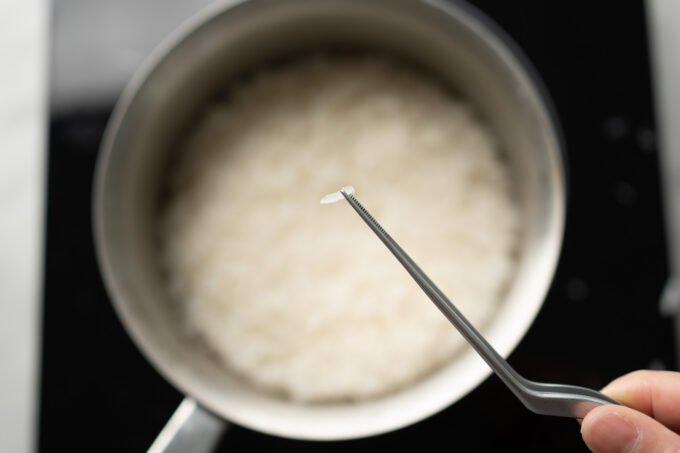
Perfectly cooked rice is soft and plump, but what happens if your rice is hard? This type of texture could signify that your rice is undercooked and there needs to be more water absorbed into each grain. You can tell rice is undercooked if you bite into a grain and see an opaque, chalky center. Fully cooked rice typically has one continuous translucent appearance throughout the grain.









